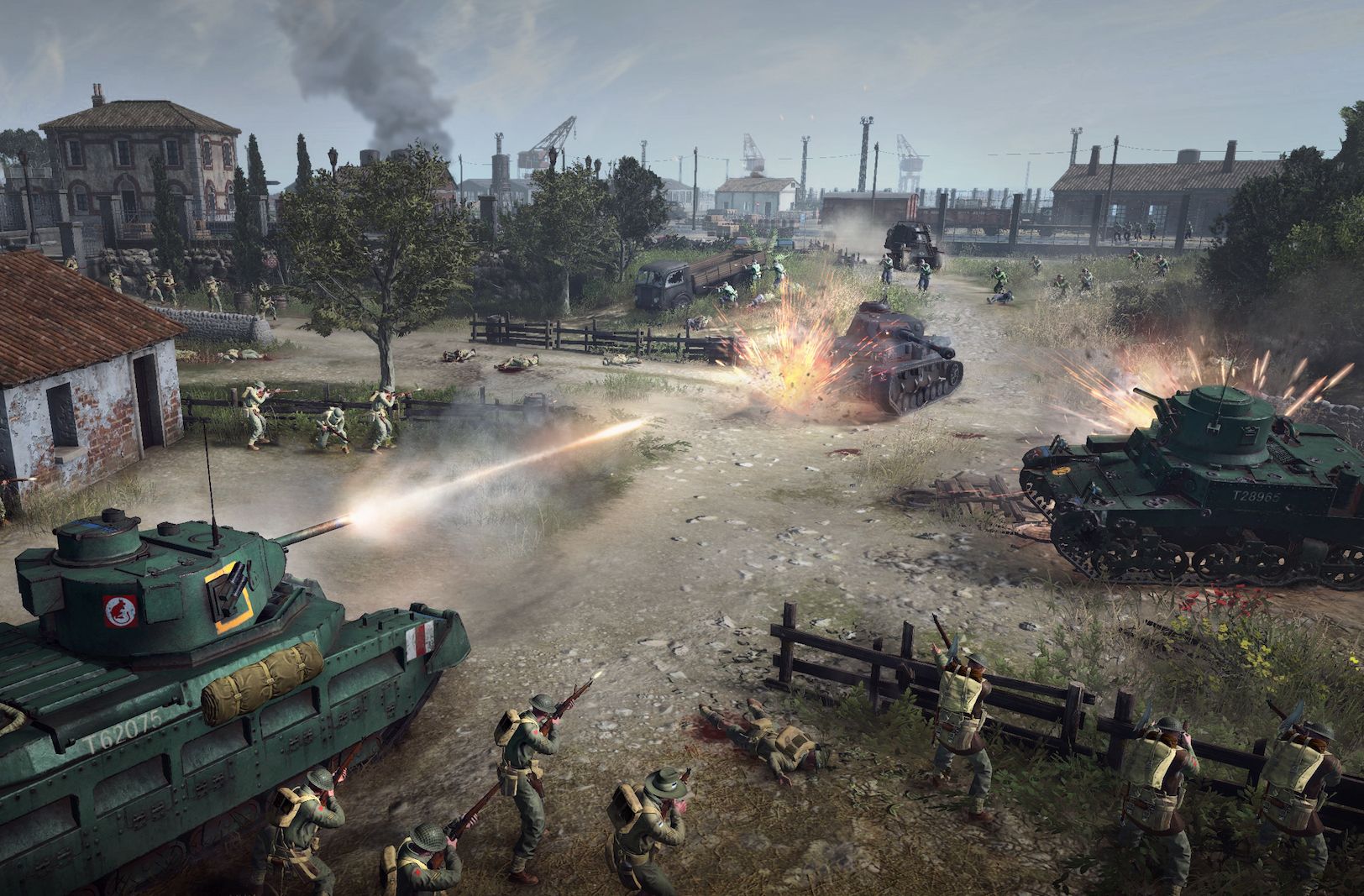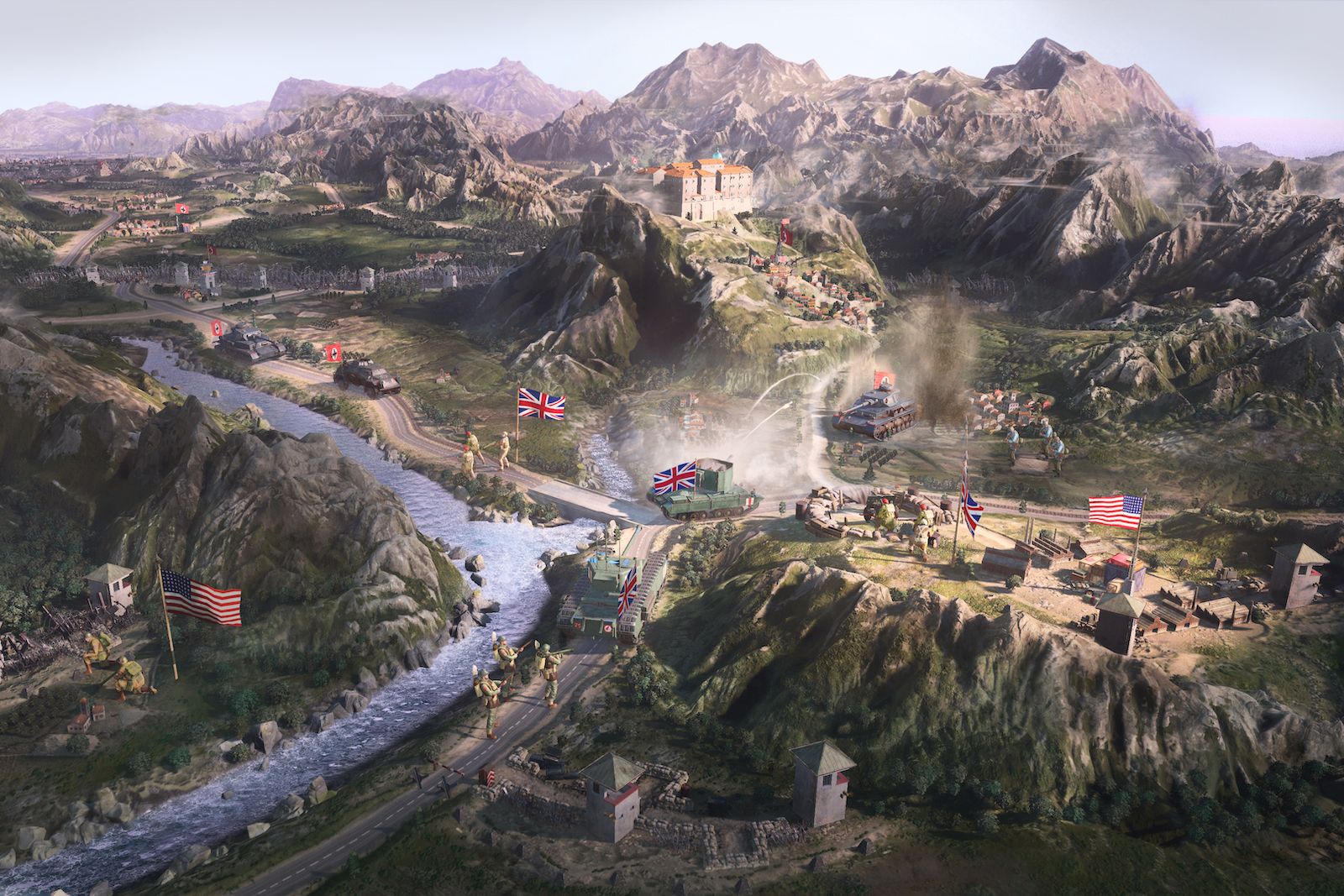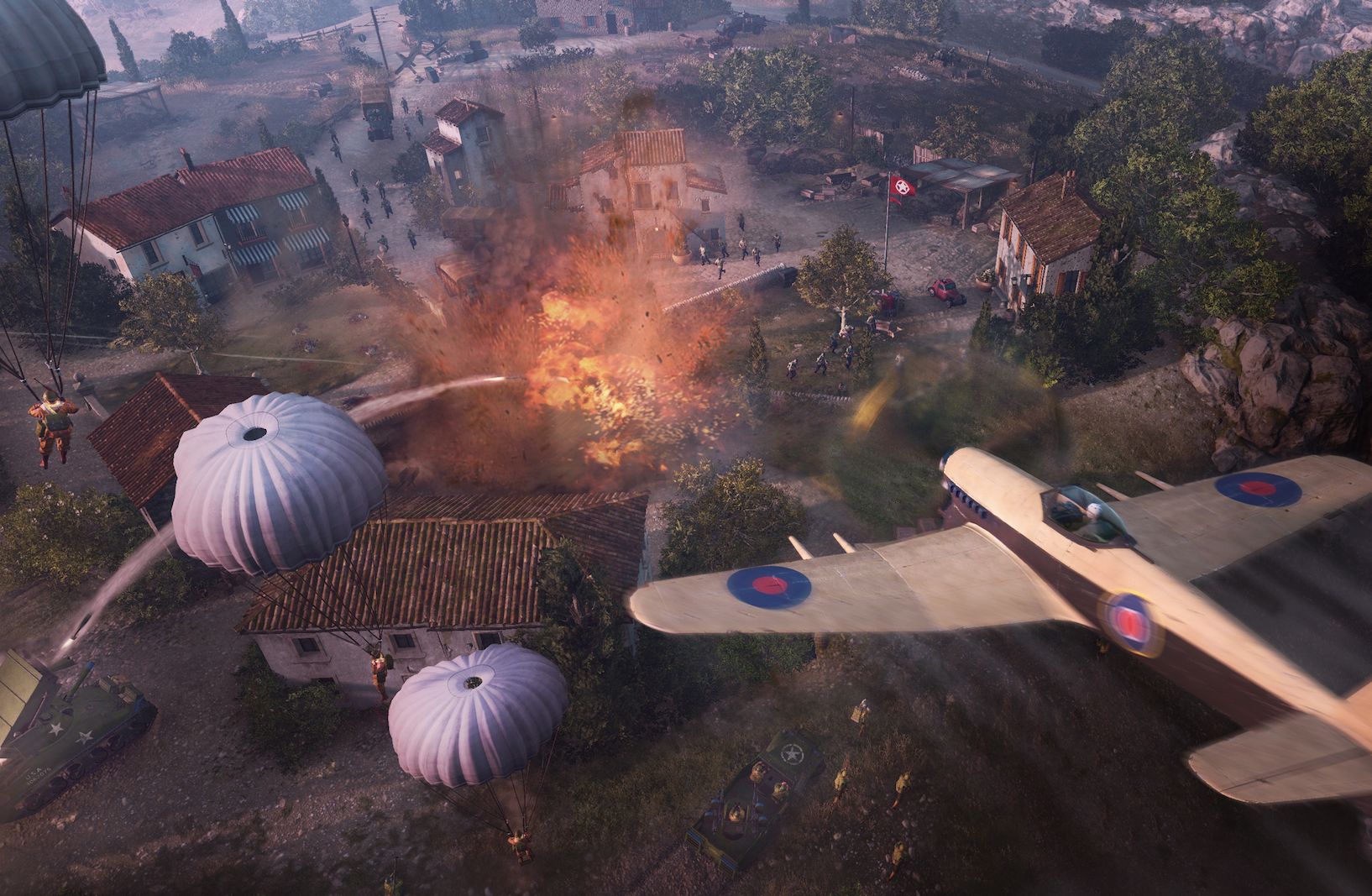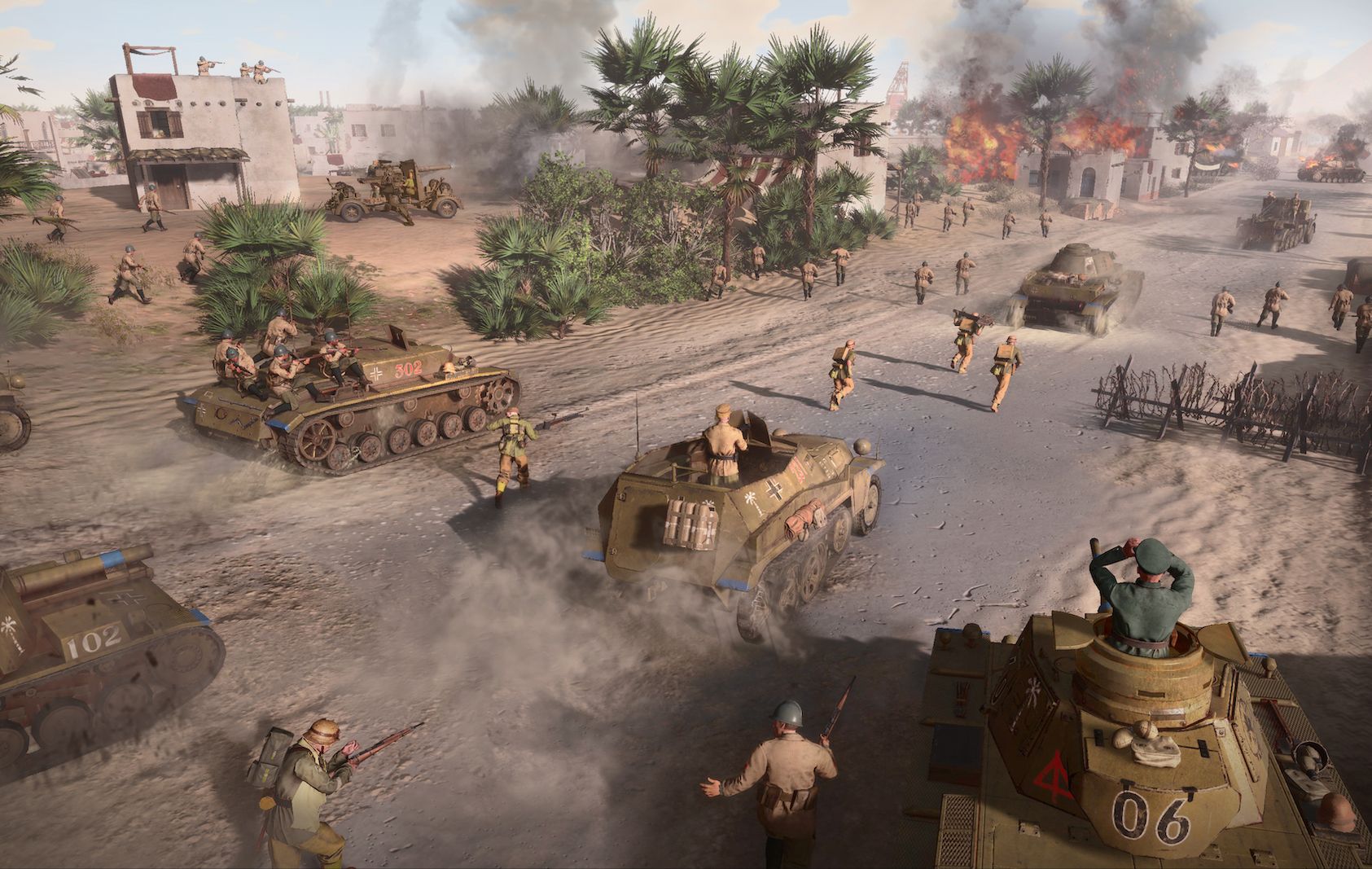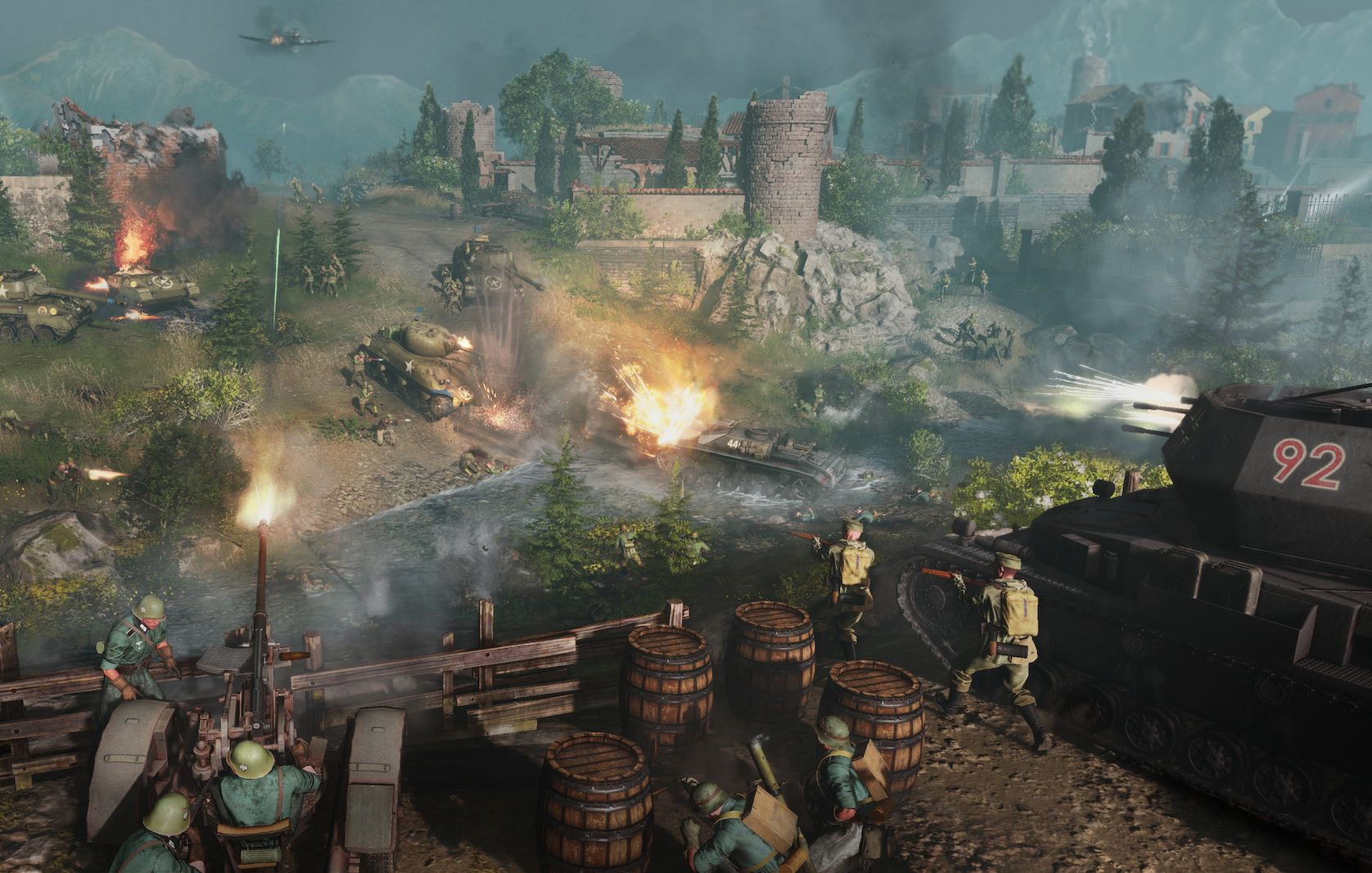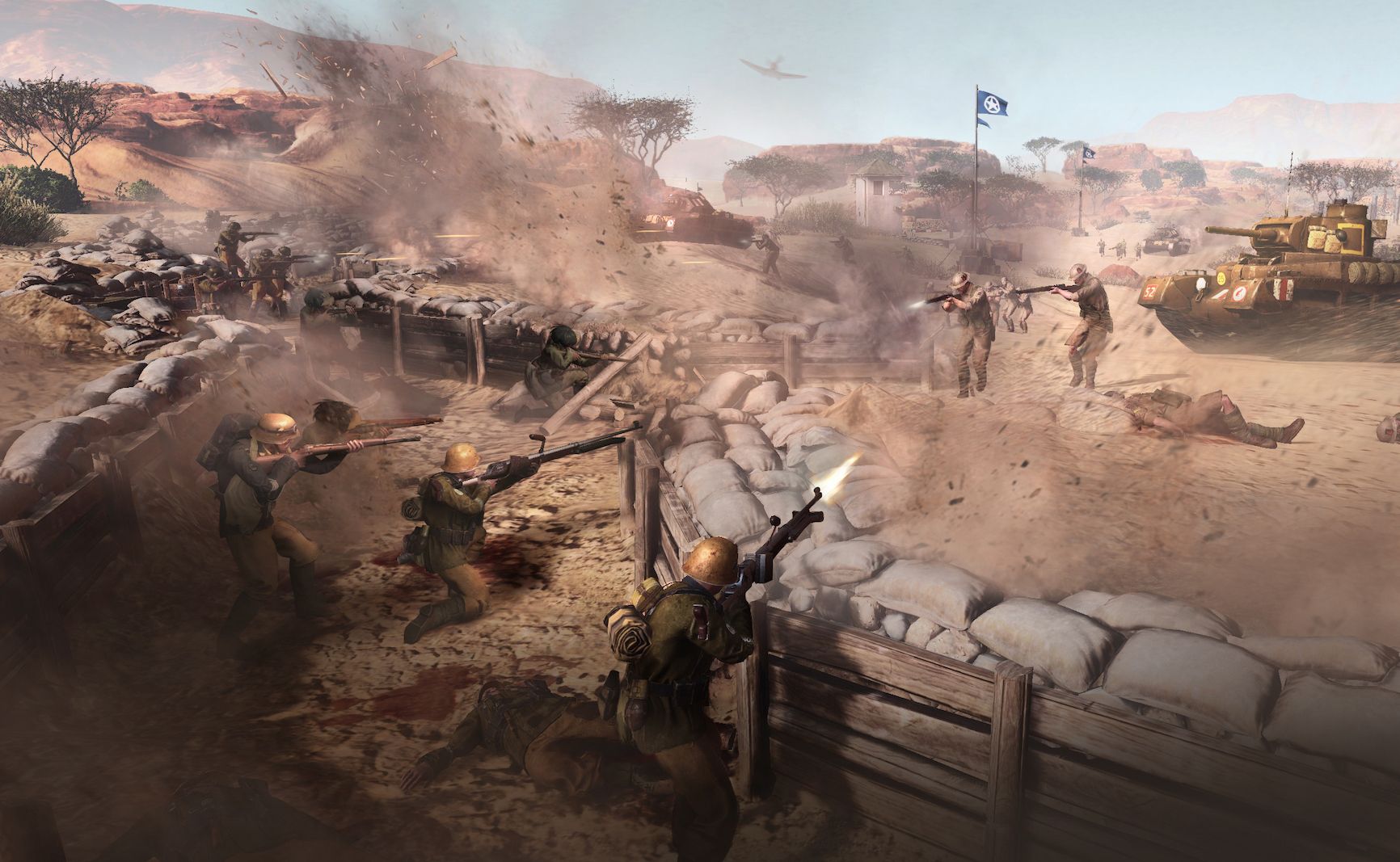The real-time strategy (RTS) game genre has experienced an extraordinary rollercoaster-like trajectory. In the late 1990s and early 2000s, RTS games were very much part of the gaming mainstream, and routinely sold millions of units. Then they seemed to vanish without trace, but have recently begun to chisel out a comeback. The arrival of Company of Heroes 3 marks the point at which that comeback can be seen as official.
In certain ways, Company of Heroes 3 provides clues as to why RTS games flirted with extinction. It is nearly 10 years since developer Relic Entertainment released Company of Heroes 2, suggesting that top-class RTS games are not easy to make. Nor are they easy to play – Company of Heroes 3 will test your tactical abilities to breaking point. If you jump into its multiplayer side, without first developing a deep knowledge of its units, interface and structure, you won't find anything but frustration.
In a world geared towards instant gratification, RTS games require their players to put in an old-fashioned amount of focus, concentration and attention to detail. Does Company of Heroes 3 reward its players for that dedication? We cleared some time in our diary to find out.
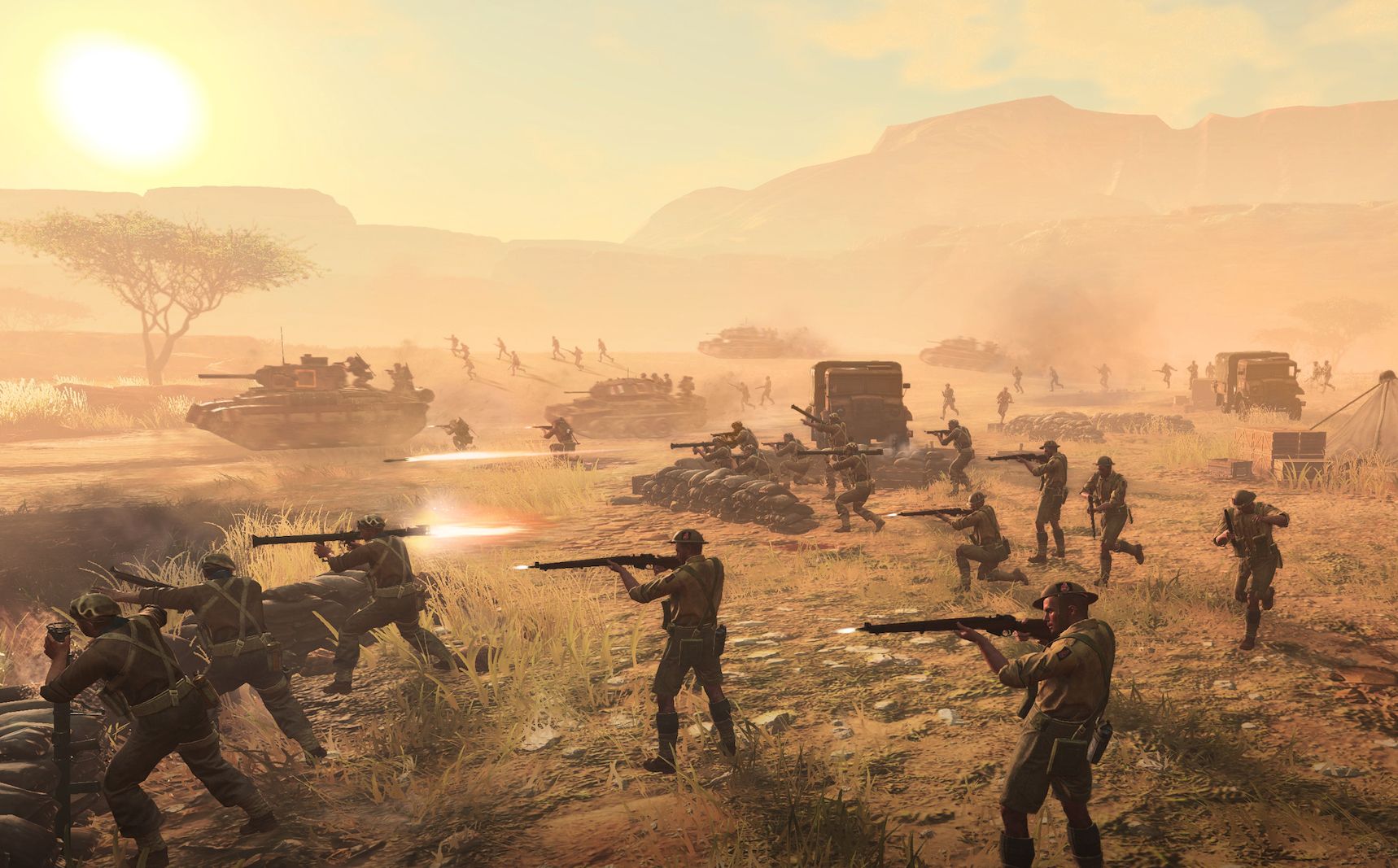
Company of Heroes 3
Bringing back the once seemingly moribund RTS in spectacular style, Company of Heroes 3 is intense, tactical, authentic, meaty and innovative - but not for the faint-hearted or those seeking instant gratification. Platform tested: PC
- Dynamic Campaign Map feeds brilliantly into gameplay
- Enormously meaty
- Incredible authentic and intense
- Deeply tactical, yet lets you play how you want
- Ability to play against AI offers more forgiving way into multiplayer
- Not for those seeking instant gratification
- Music overly bombastic
- Tutorial could be more comprehensive
- North Africa campaign storyline jars a bit with the action
Bringing new ideas
As it turns out, Company of Heroes 3 aims to do more than provide satisfying gameplay - it also brings some clever new ideas to the RTS party. Especially in the first of its two single-player campaigns, which charts the Allied forces' sweep from south to north in Italy starting in 1943, before continuing all the way up to Germany.
Available on PC, Xbox Series X/S and PlayStation 5, it starts off - after a slightly cursory tutorial - with the initial landing in Sicily, in which you must fight your way up from a beach to secure a coastal town. At first, you must get to grips with the different types of troops at your command and their abilities - scouts who can send up flares to cut through the fog of war and obscure enemy sightlines with smoke grenades, engineers who can cut through wire defences and fix machinery, riflemen with grenade launchers, snipers who must be carefully placed and so on.
Building barracks, medical stations and the like allow you to spawn new squads, and you soon realise the importance of instructing squads to retreat when they are getting hammered - through the course of a battle, your troops will become veterans, increasing their effectiveness. There's a colour-coded cover system, too, and as the campaign progresses and you acquire support from nearby warships and airfields, you can recce areas and bomb them before sending in your precious troops.
Adding a board game-like layer
As the Italian campaign gets into its stride, you soon find Relic's main innovation, which it calls the Dynamic Campaign Map. Essentially, it offers a turn-based, board game-style overview of the Italian campaign, which lets you plot your own path towards Rome. That part of the game has a sub-plot involving friction between the US and British commanders, so you must take decisions on whether to be bold or to consolidate before pushing on. Those decisions will bring rewards from one of the two factions in terms of the types of troops you can deploy and their specific skills.
The Dynamic Campaign Map would make a pretty decent game in itself. You can sometimes opt to auto-resolve skirmishes that take place on the map, but what you do on it also determines the order in which the campaign unfolds, generating a vast amount of replayability. You really do see the benefits of decisions you take at a macro level when you drill down into the campaign missions, which is pretty cool. And once in those missions, it's very much up to you to develop your own play-style, with no single, prescribed approach.
Intense tactical gameplay – but you can pause and take stock
Gameplay-wise, Company of Heroes 3's single-player side is every bit as intense and tactically challenging as you would expect an RTS to be, but Relic has made the odd concession to make it a tad more forgiving. Most notably in the form of what it calls Full Tactical Pause: hit the space bar and the battle will temporarily halt, allowing you to chain a string of commands.
This proves especially handy when things aren't going your way, but if you do you lose battles, the game usually gives you the chance to retry them - though sometimes you can redress the balance via the Dynamic Campaign Map instead.
Company of Heroes 3 certainly doesn't skimp when it comes to depicting the horrors of war - at all points, it feels hellishly authentic. Despite its top-down RTS view (graphically, it's as good as any RTS we've clapped eyes on) you'll find yourself becoming emotionally attached to your men, especially when they're being pinned down by machine-gunners or ripped to shreds by a tank – ordering them to retreat for medical assistance is a key gameplay mechanic.
North Africa: a more vehicular campaign
Company of Heroes 3's second single-player campaign is set in North Africa over a longer period of World War II, and is more conventional in pure RTS terms, as it lacks a Dynamic Campaign Map and is linear. But it also has a storyline, depicted in cut-scenes, which offers a take on proceedings from the point of view of the local inhabitants. It explores a certain amount of ambivalence among them as to which of the factions to back, so - somewhat bravely and perhaps a tad controversially - you play the campaign as Erwin Rommel’s Afrika Korps, fighting off Montgomery's plucky Desert Rats.
Most of the big battles fought between Rommel and Montgomery are included, and the North Africa campaign is particularly intense as it puts greater emphasis on vehicle-based combat, with tanks, armoured cars and heavy artillery which must be towed to the fore. Abandoned vehicles can be salvaged and used, and this chunk of the game offers completely different tactical challenges to the Italy campaign. Plus it's very meaty – the two campaigns between them add up to around 40 hours of gameplay, even before taking into account any urge to replay the Italian campaign completely differently to your first play-through.
Flexible, hardcore multiplayer
The North Africa campaign, with its vehicular emphasis, sets you up nicely for Company of Heroes 3's multiplayer element - although certain aspects of that are also tantalisingly trailed during the Italian campaign, in the form of Skirmishes which are essentially multiplayer match-ups against the AI. Indeed, you can explore the various multiplayer modes and factions (of which there are four at launch: British forces, US forces, the Wehrmacht and the Afrika Korps, each broken down into more specialised Battlegroups) by playing against AI opposition, either solo or co-operatively with another player.
Unless you're an existing Company of Heroes player, you'd be well advised to do that, since the Player versus Player multiplayer is super-hardcore, requiring an almost encyclopaedic knowledge of the game. Playing against the AI, however, offers a much gentler entry point before taking on much more devious human opposition.
Setting new standards
You couldn't ask for a better standard-bearer for RTS games than Company of Heroes 3. Its depiction of some of the key campaigns of World War II is as authentic and intense as you will have seen in any other WWII game, regardless of genre. It will exercise your skills as a tactician until they are finely honed, which is what gives RTS games their attraction. The Dynamic Campaign Map is incredibly clever, essentially making Company of Heroes 3 the first properly non-linear RTS, and endowing it with a vast amount of replayability. Surely other RTS developers will copy its format in the future.
If we had any quibbles, it would be with the music which, while it has an authentic period feel, can be overly bombastic and overblown at times, and the North Africa campaign's storyline isn't entirely successful, although it is at least thought-provoking. And as with all RTS games, it's about as far from being pick-up-and-play as possible – if you're not prepared to put time and effort into working out how to play it, then you shouldn't even approach it.
But such details pale into insignificance besides the game’s authenticity, intensity and longevity - even after the best part of a decade, Company of Heroes 2's multiplayer side still has a sizeable playing community. Company of Heroes 3 not only proves that the RTS can enjoy a welcome second coming, but also points to where it can go as a genre in the future.

